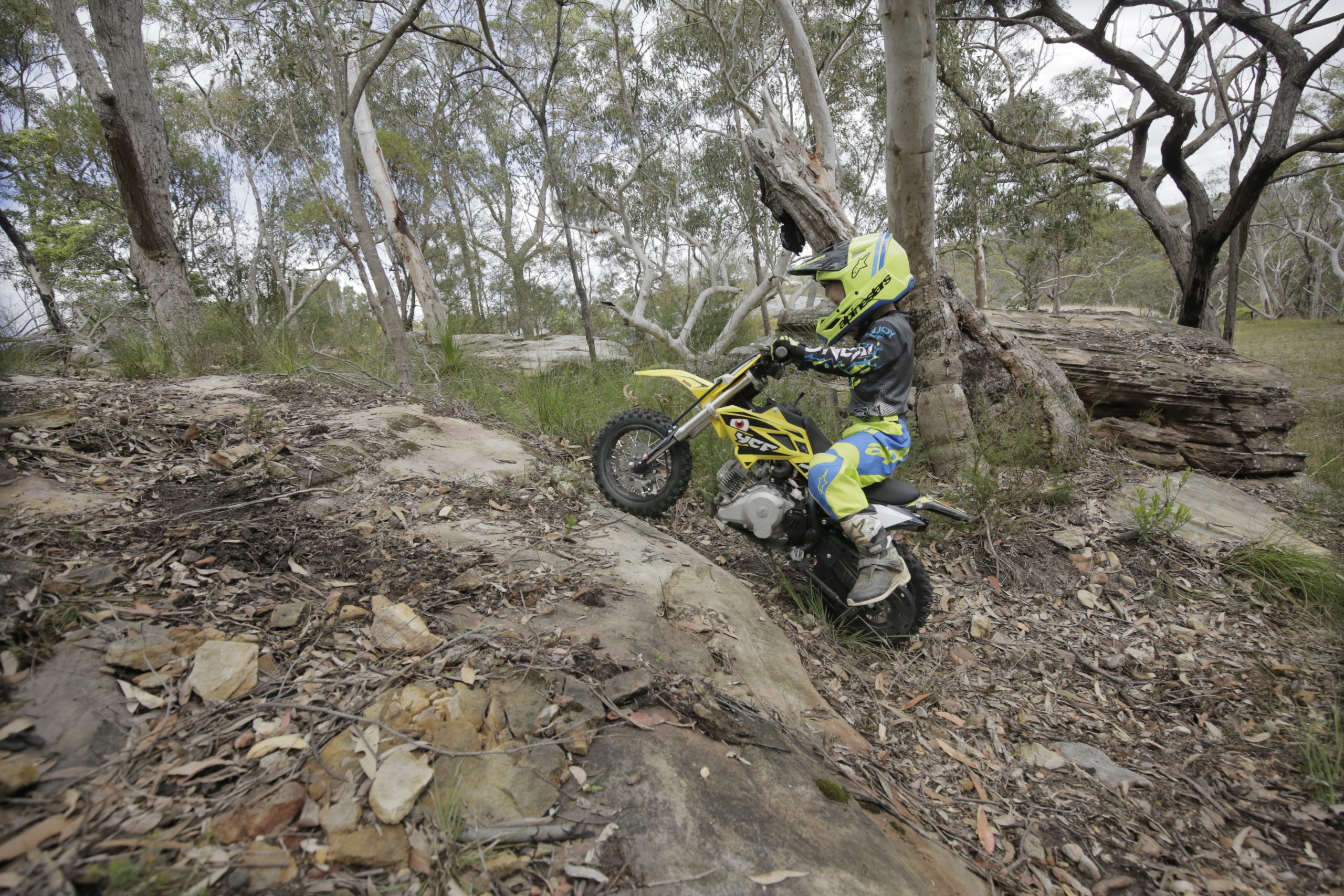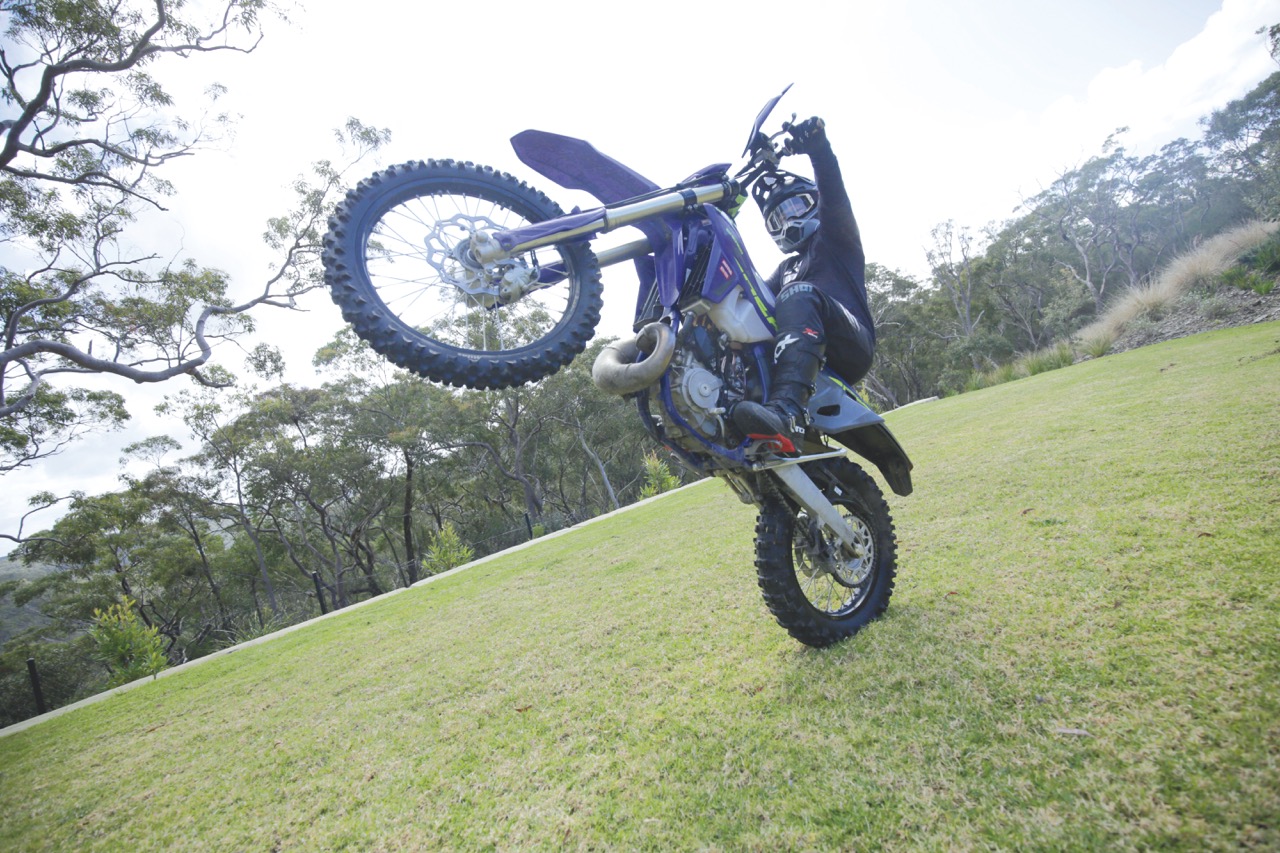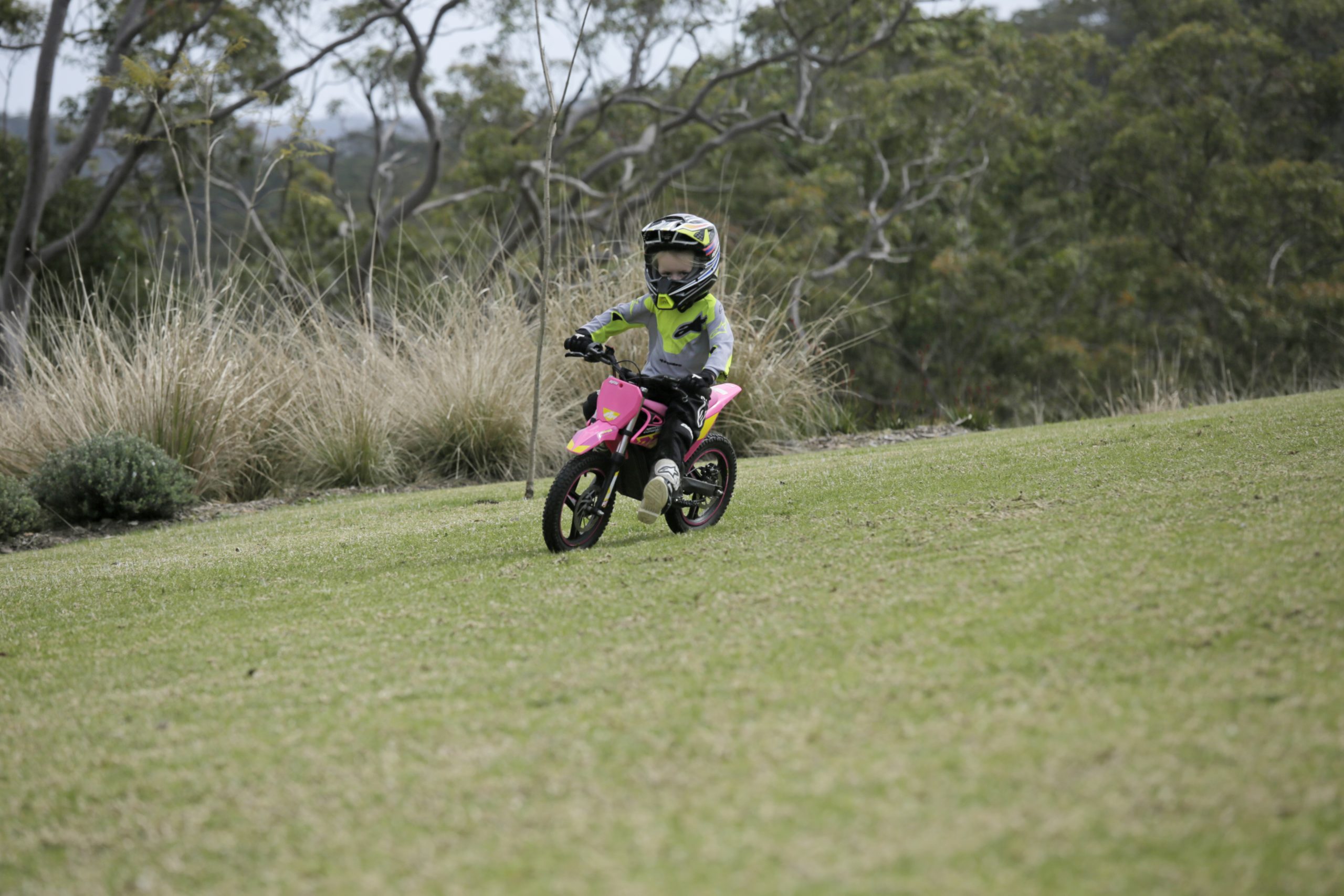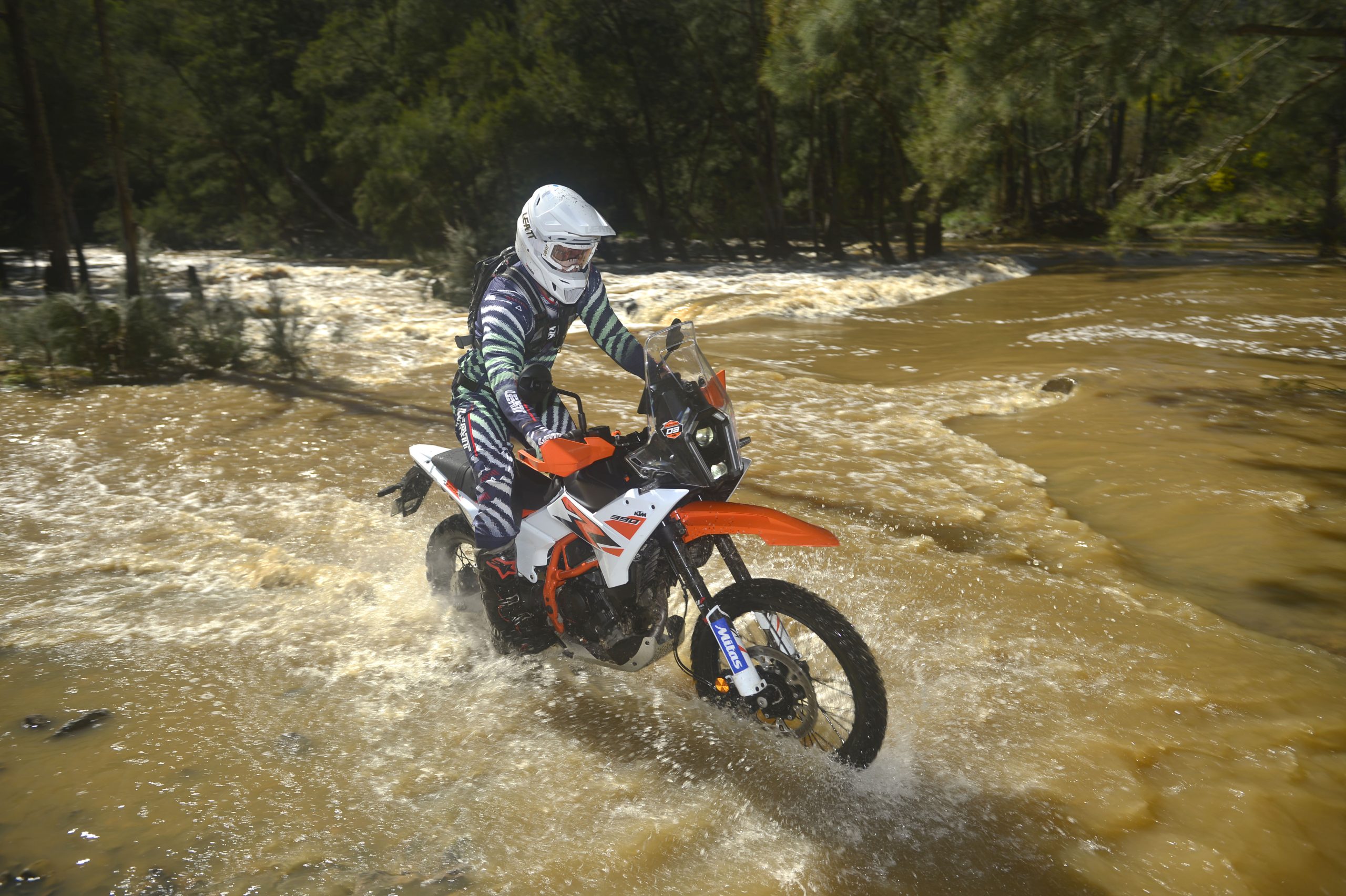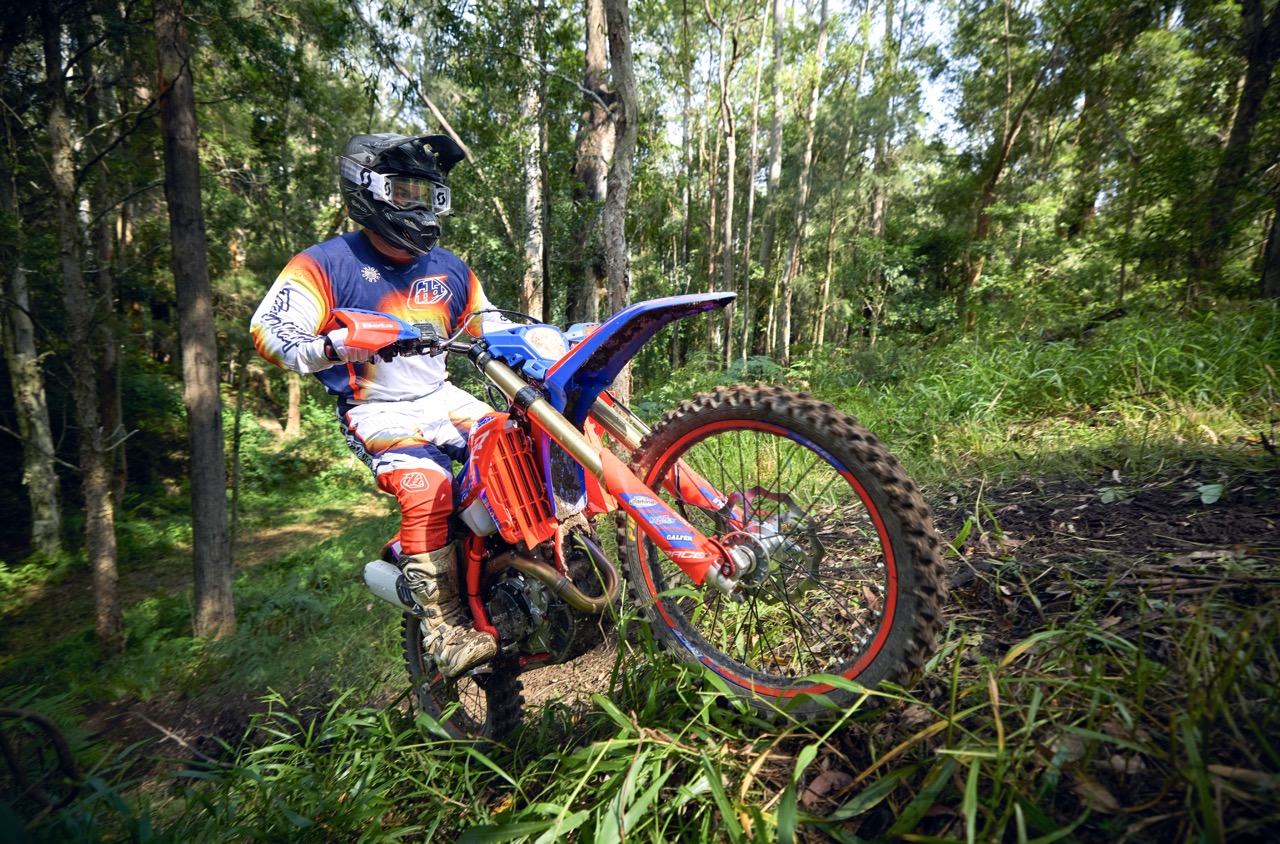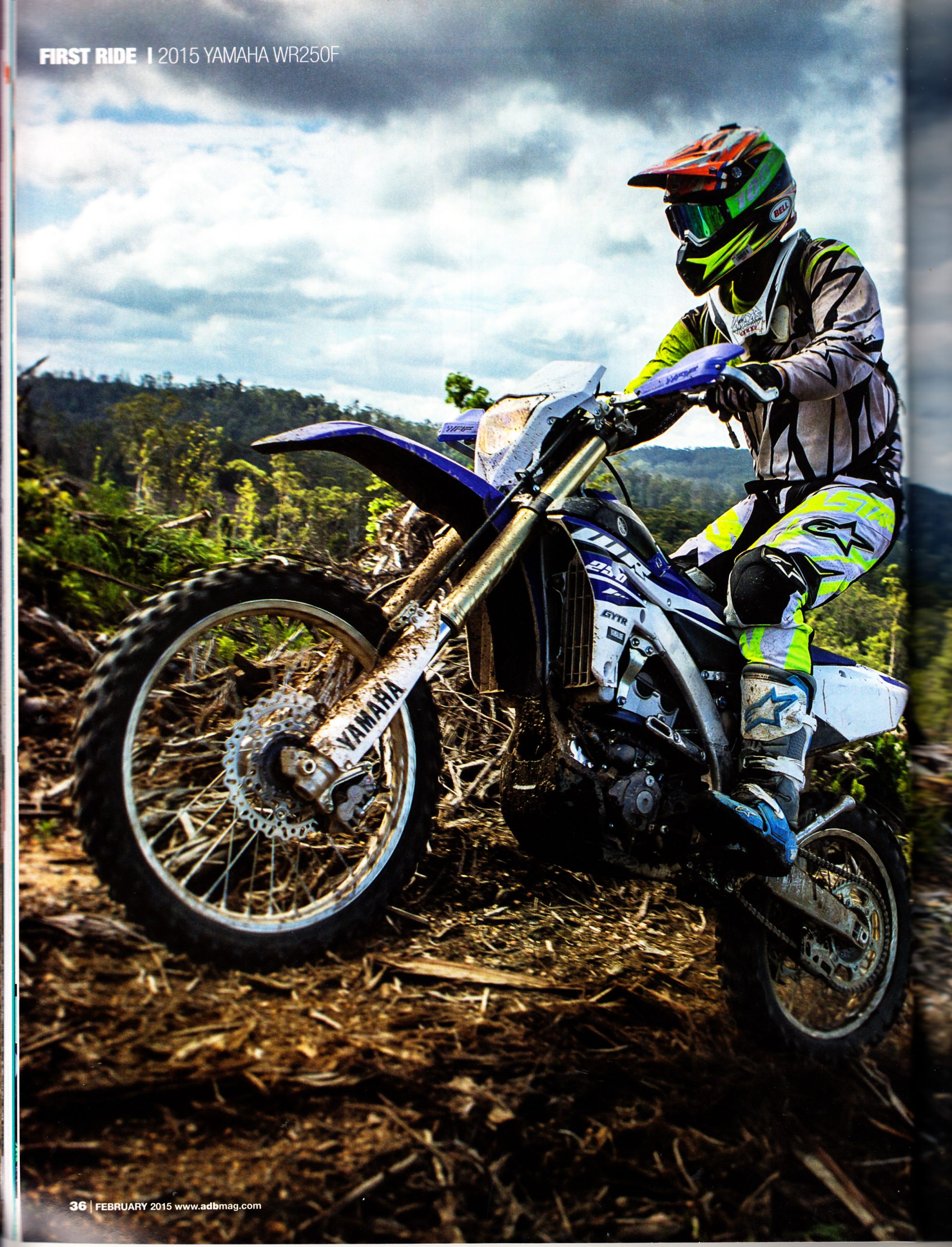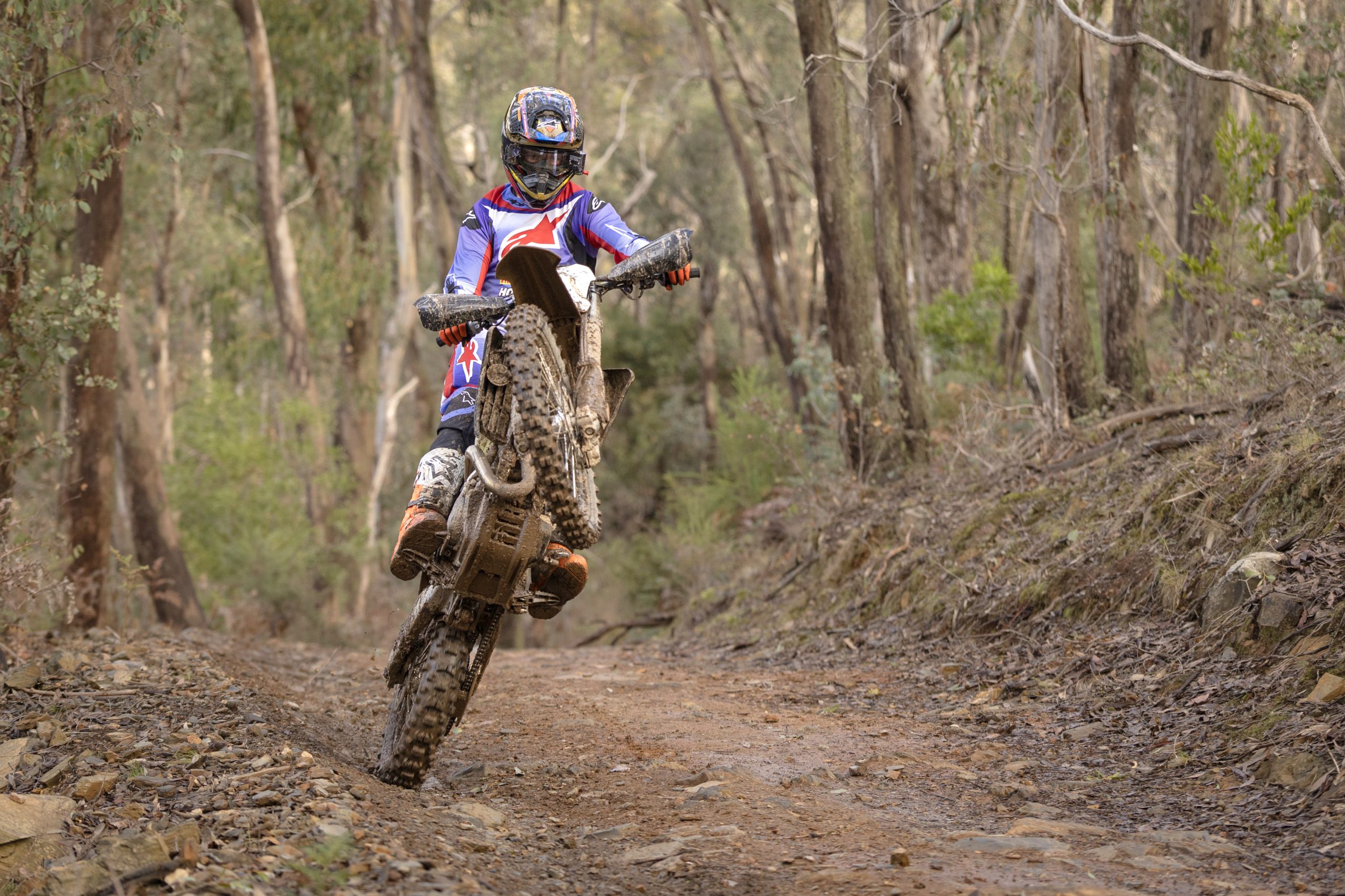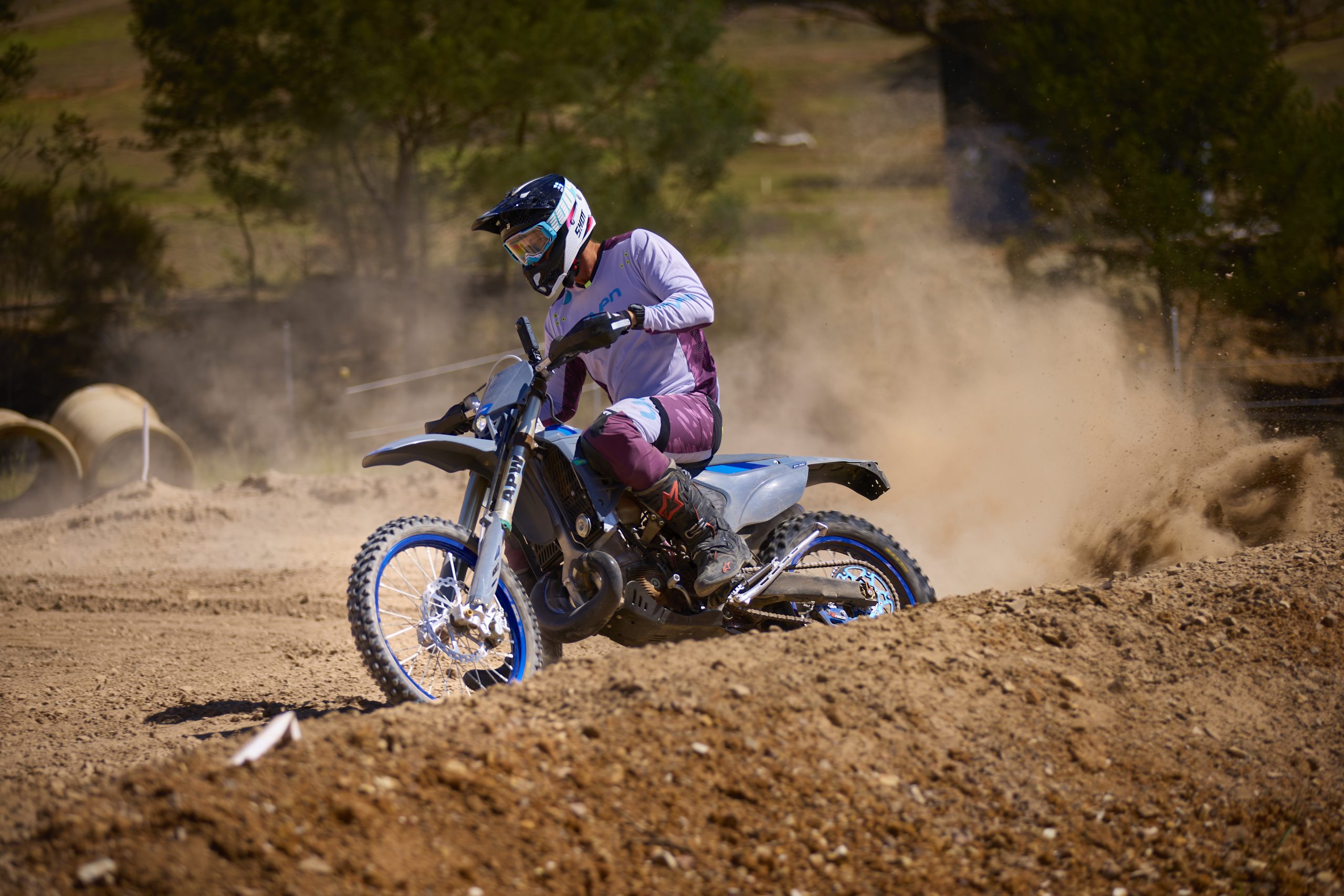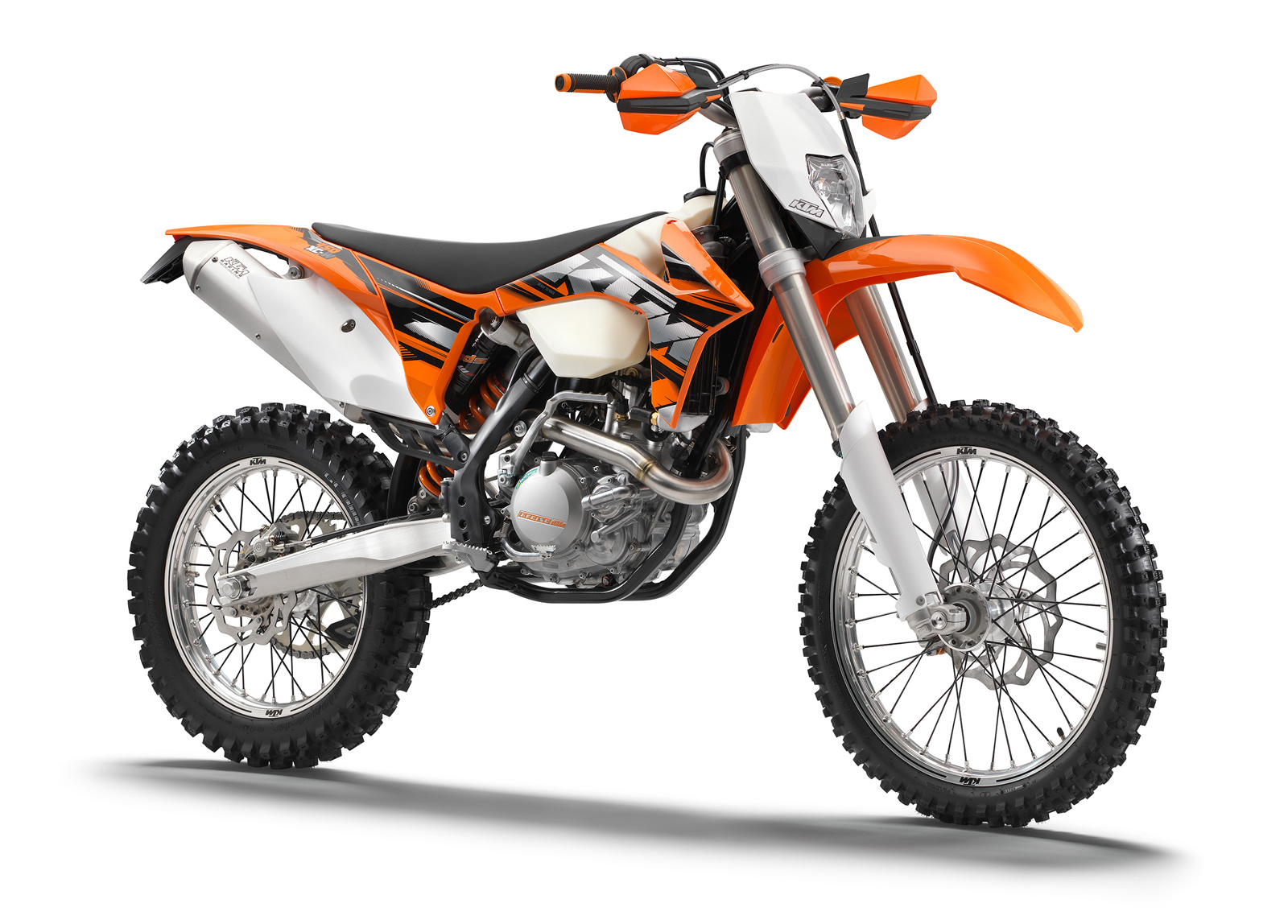The two most prominent manufacturers in the local hard enduro scene are Beta and Sherco. They’re the only two brands with factory-supported riders doing battle in the Australian Hard Enduro Championship and plenty of people are asking what mods to they need to make for the 2024 season to their Beta RR300 for Hard Enduro.
With more and more red and blue bikes turning up to the AHEC every year, we thought we’d see what the top riders from both those brands have been doing to their bikes. Last issue, ADB’s Chief Tester Ben Grabham rode Chris Perry’s Sherco 300 SE Factory he raced last year to get an idea as to what Perry changed to make his Sherco finish on the podium.
This month, I had the privilege of jumping on Ruben Chadwick’s AHEC winning Beta RR 300 Racing to see what changes he’d made that would be good to do for any punters taking on the AHEC this year on a Beta. To do this I ventured up to Northern NSW where Ruben and his bike were presiding for a few days to throw a leg over his Italian stallion to pick my favourite mods for a Beta RR300 for Hard Enduro.

WHAT DID HE DO?
To my surprise, Ruben and his mechanic Ash Martin hardly touched anything in the motor. Obviously hard enduro bikes aren’t under the same stress as an off-road race bike is so the need to make major engine upgrades isn’t necessary. So long as they grovel, you’re all good!
Ruben weighs 95kg and the stock setup felt too soft for him. Although Ruben did admit you don’t want an overly stiff setup for hard enduro, he still wanted a setup that had some resistance in the stroke. Ruben said it is crucial to prevent the 2023 RR 300 Racing from riding low in the stroke and bouncing off obstacles. Ruben prefers to stay in the initial part of the stroke for most of the ride.
To achieve this, Ash and his team of Beta technicians opted for a 54 rear spring and a 46 front spring while maintaining quite soft valving. Suspension adjustments are done in-house. There’s no fancy Kashima coated parts or unobtanium valves, just the standard Racing gear with heavier springs setup to suit Ruben’s weight.
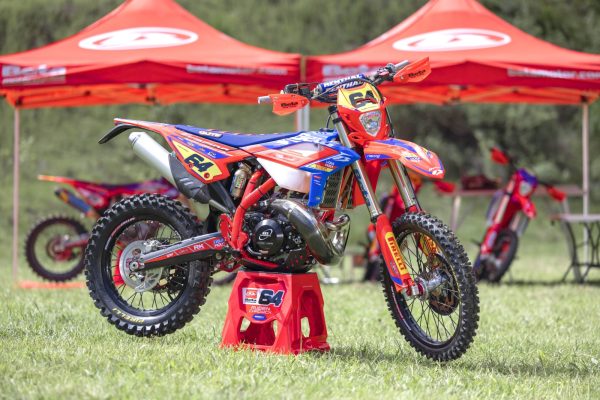
While the stock motor is enough of a handful for most of us mere mortals, Ruben prefers a fairly aggressive bike. Many riders might opt for a toned-down version, but Ruben likes his robust with ample torque and snap. And interestingly Ruben likes to set and forget with his mapping and keep it on the same map throughout.
They’ve made several modifications, primarily focusing on protection rather than performance enhancement. Starting from the front, they’ve added a Beta alloy disc guard, slipper clamps on the master cylinders, soft half waffle grips, and a Twinwall 996 handlebar. While Ruben used to use higher ‘bars, he’s reverted to a more standard setup. They also apply kinesiology tape on the levers for improved grip in wet conditions.
The bike features AS3 perches and billet covers from the clutch to the water pump for added strength. Additionally, they’ve installed a P3 pipe guard and an AXP bash plate, with a ProPower linkage guard replacing the lower portion of the bash plate. To help his arse to hang on, they use a Guts seat cover. AXP radiator guards, along with a thermos fan and Racing radiator hoses remove the need for the thermostat, reduce weight and keep it cool.
They’ve upgraded the bike with S3 footpegs, a Beta case saver, RK chain, and a 51-tooth rear sprocket with an AXP chain guide. Plastics are from Polisport and a Polisport plastic swingarm protector provides further protection. Tugger grab handles and Plushie Nitro Mousses are also part of the setup.

The wheels and hubs remain standard, but they lockwire the spokes and use wheel spacers for easy changes and added protection from mud and debris. Despite the extensive modifications, they’ve kept the pipe and motor stock, not even adjusting the jetting on the Racing model.
Unlike some riders who plough through obstacles, Ruben tries to be lighter on the bike. He prefers instant power as soon as he opens the throttle and then uses the clutch to modulate that power. This allows him to crawl when needed while still having a reserve for significant obstacles.
Knowing that this bike was largely stock with the exception of protection parts and customised suspension, I was still pumped to jump behind the bar and see if such few changes could make something so much better. And more importantly, I was keen to see if Beta owners could save some coin by focusing on tailored suspension rather than bulk engine upgrades.

DON’T RIDE IT LIKE YOU STOLE IT!
Hopping on any champions’ bike is usually a daunting experience. Whenever I ride a championship winning supercross or motocross bike, I get nervous that I might drop it and damage their precious metal. But when it came to Ruben’s AHEC-winning bike, I had no such fears. The bike was in the exact same condition he rode the final round of the AHEC at the Goldfields Extreme in Bathurst, NSW so it was covered in war wounds.
Sitting on the bike I immediately noticed the grippier seat. The Guts seat cover was excellent at holding me in place when sitting down and grovelling. I’d say it did better than a speed hump in the seat to stop you sliding backwards. I grabbed a hold of the lever and felt the kinesiology grab my gloves. I’ve never used this before but found it incredibly useful and at $10-$20 a roll, this is something I will be putting on all my hard enduro bikes from now on.
I fired it into life and stuck one foot on the S3 footpegs and immediately my foot stuck to them like glue. The teeth were so sharp that at times it actually made getting my boots off hard work! I tend to sit down a lot while hard enduro riding so I didn’t find the footpegs as useful. A rider with a trials background that stands up a lot might like them though. While they provide excellent grip, I’d personally save my coin.
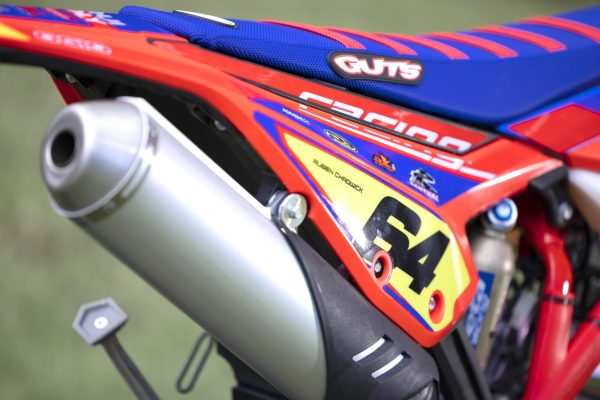
As I took off, the motor didn’t feel any different to how it felt standard. Ruben had the engine in the aggressive map and I think as a 96kg rider I also prefer this. It allowed me to carry a taller gear everywhere and then utilise the more snappy power to loft the front wheel up obstacles. I don’t trust my throttle or clutch control enough to run the soft map and rev it, I’d rather do what Ruben does and run the aggressive map and baby it.
The 51-tooth rear sprocket is a must. I made the same change to my Sherco 300 SE Factory and the extra torque makes hard enduro so much easier.
As I entered the first messy rock section I was hesitant and hit it quite slowly. The suspension felt good but not fantastic. It wasn’t as firm as the standard racing KYB suspension when plodding through rocks but it also didn’t blow me away and I was questioning if the modifications were necessary.
Then Ruben watched me come back through the same rock garden and pulled me over.
“You need to go faster” he said.
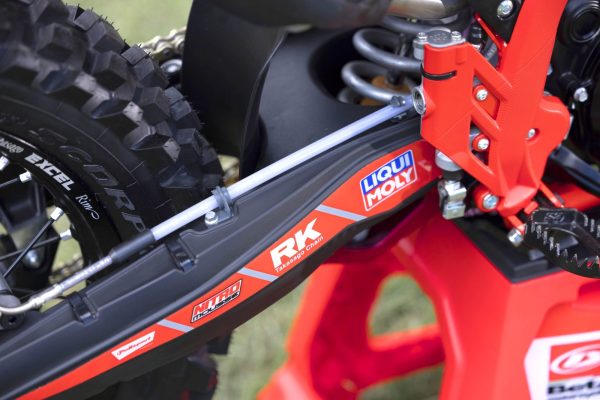
I was a little perplexed as I’d only ever seen hard enduro riders going slowly so I assumed they’d set the suspension up to suit the grovelling they do. Ruben explained it’s not necessary to setup the suspension for slow speeds because most standard suspension can handle that. He wanted it set up so he could plough through dry creek beds without it deflecting.
So I set off again in the direction of the creek bed and this time almost doubled my speed. I was convinced I’d break my wrist on the first rock I hit but to my surprise the fork and shock absorbed it without even deflecting. The suspension is a completely different setup to an AORC bike.
Ruben’s main aim was to stop nasty deflections and the heavier springs with soft valving did exactly that. Most AORC racers would go heavier on springs and harder on valving to allow them to repeatedly hit braking bumps tapped in third gear. But, while Ruben wanted his suspension to hold up and not sit in the harsh part of the stroke, he also wanted it to be soft for those loose, slippery creek beds and his combination worked flawlessly.
I would highly recommend going with his spring weight choices if you weigh between 90 and 100kg. As for valving, that was an in-house secret but you can simply ask your preferred suspension tuner to make the valving softer and they should know what to do.
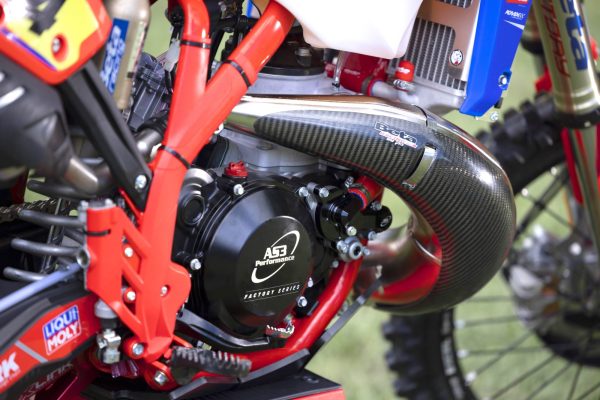
NO BRAINER
As for the protection stuff, I’d suggest a pipe guard and maybe the disc guards. A bent brake disc will end your day. Like Ruben, I like the motocross-style handguards and after a year on the Sherco, I never broke a lever running them. I’m not a huge fan of radiator guards as they add weight and girth and I’m not going hard enough to smash linkages so unless you’re going to double blip like Ruben, you probably don’t need to worry about the linkage guard either.
But the two things all hard enduro riders should try and get on their machine is the Nitro Plushie Mousse and some sort of gummy tyre. The Nitro plushie feels like 4-8PSI and allows the tyre to belly out to get more traction. You combine this with soft rubber (I like the Dunlop AT81EX but I’m aware they’re quite expensive) and it’s almost like cheating. If you can afford it, the Mousse and gummy tyre option should be the first change for any hard enduro rider.
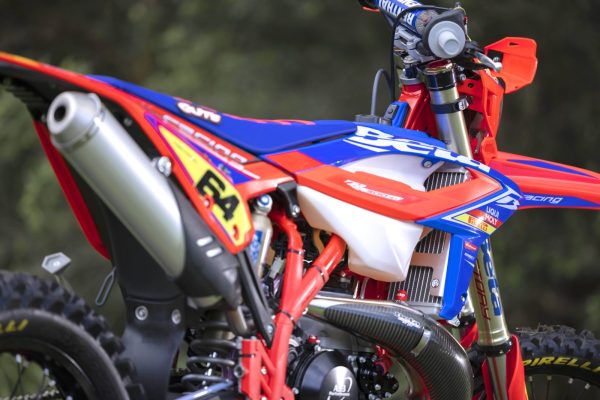
Mitch’s Mods in order of importance
- Gummy Tyre
- Nitro Mousse Plushie Tubes
- 51-tooth rear sprocket
- Heavier springs, softer valving
- Thermos fan or Ruben’s thermostat mod
- Guts seat
- Kinesiology tape on levers
- Tugger straps
- P3 pipe guard
- Beta alloy disc guard
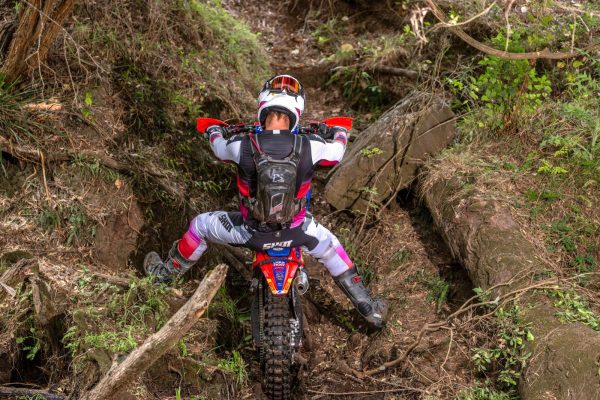
WORDS | MITCH LEES
PHOTOS | BUSTAPHOTO
